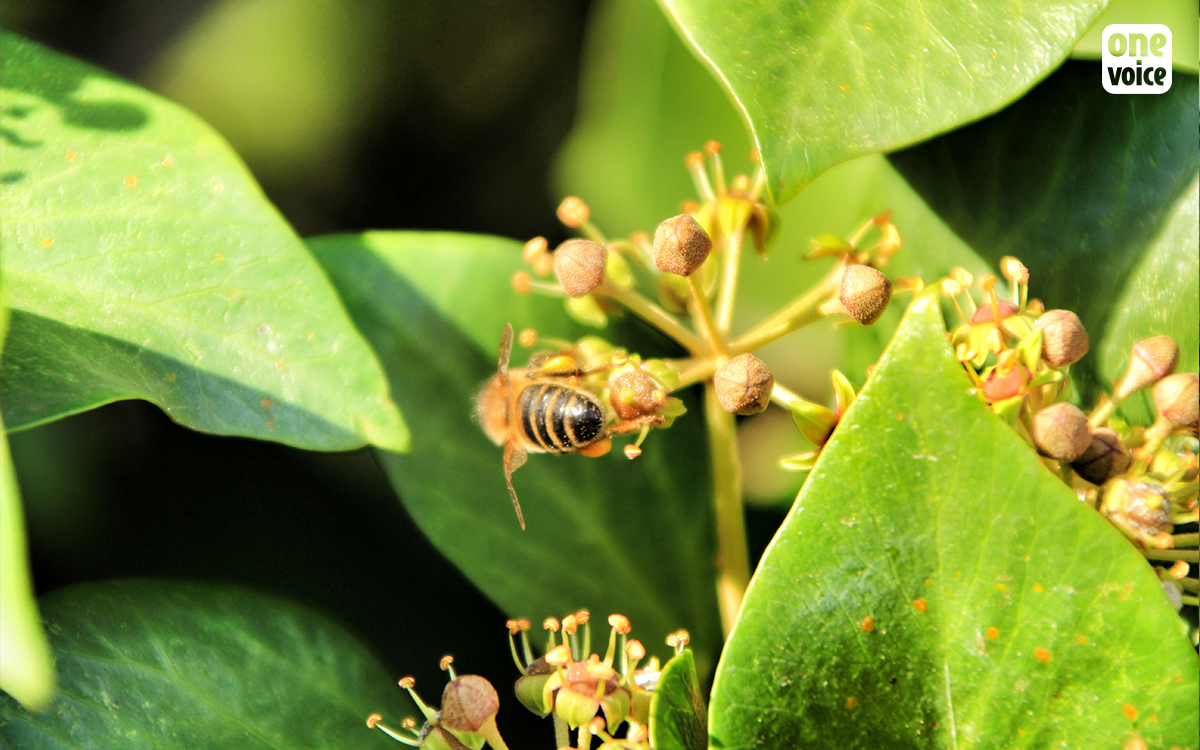
Ivy, praise for an outsider
One Voice leads a nonviolent fight to defend animal rights and respect all life forms. The organization operates independently and is thus free to speak and act freely.
Common ivy (Hedera Helix) does nothing like the others. Green space managers often see this this plant that spreads in abundance with a negative eye, it nevertheless appears to be particularly gifted in many areas and excels in preserving the biodiversity. Trust it, have some faith in it… and it will take care of the rest!
Eccentric,
a bit provocative, the ivy (Hedera), one of the Araliaceae family,
does as it pleases. Immediately germinated, its young shoots eager to
discover the world spread everywhere cheerfully in most climates and
on all types of soil, even the least fertile. The plant is available
in different species and varieties, wild or cultivated, across the
globe. In our temperate regions, it is Hedera Helix (common ivy) that
we meet most frequently, crawling in the darkness of the undergrowth,
lining the thickets, sliding under the hedges, hoisting itself upon
the walls, climbing tree trunks, rising towards the summits! With its
multiple lignified stems, the liana moves quickly and redecorates the
landscape in its own way. But its moving work, sometimes spreads over
kilometres long and up to 30 meters high, is not to everyone’s taste
… And this misunderstood artist has fewer fans than critiques.
A gentle rebel
Armed
with pruning shears, or even chainsaws, gardeners perceive ivy as an
unruly rascal, too robust to be honest, capable of ransacking
architecture, or even killing trees! However, even if the gardener
sees it as the original skin head in the garden, it’s not really
all that bad! With its shaggy cut and overflowing vigour, it
certainly embraces fiercely all in its path, but does not destroy.
Equipped with small crampons allowing it to hang on, it’s just
looking for supports, if possible vertical, to grow towards the light
and in favour of hatching its yellow flowers… Far from it is the
desire to parasitize, to suffocate or collapse its supports… On the
contrary, and it is even very useful to its host: a natural thermal
insulator, it also knows how to protect from humidity, drought,
erosion or even animal markings… When it is removed, the surfaces
it has covered are often better preserved than those where it was
not. Of course, it sometimes happens that old, already cracked stones
or an end-of-life tree wobbles under its weight, but this good
companion is not responsible for their demise! It only slightly
accelerates the normal course of things and the regeneration process.
Other strings to its creepers
Among
other qualities, ivy is also recognized as a purifier of air polluted
by certain poisons. It is also a valuable aid in biological control,
as it harbours aphid predator bugs. And not only! Its evergreen and
abundant foliage is visited by a multitude of animals. Bats, for
example, like to hang there and many birds nest there. In addition,
with a development cycle completely offset from most plants, this
outsider begins flowering when autumn arrives and the rest of the
vegetation is thinning around. It is therefore a delight for browsers
whose basket is less loaded at this time of the year. As a good
caretaker, it then offers its fleshy berries (not edible for humans)
early on, throughout the winter, with frugivorous avifauna and
certain mammals, such as garden door mice or foxes, which love them!
Under its troublemaking appearance, ivy therefore has wise dimensions
and proves to be an ardent protector of the biodiversity. Take with
it its steps by joining in with the Arches of Nature, by letting it
become attached to you, it will be able to conquer your heart!